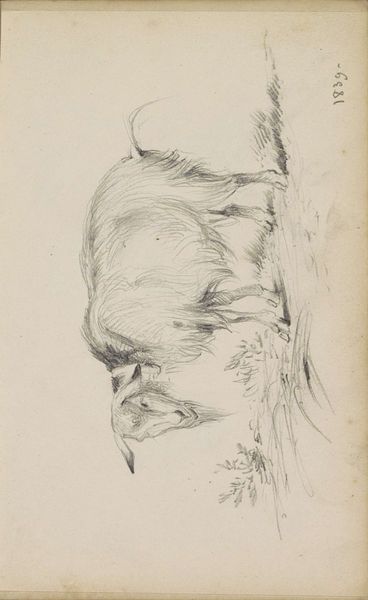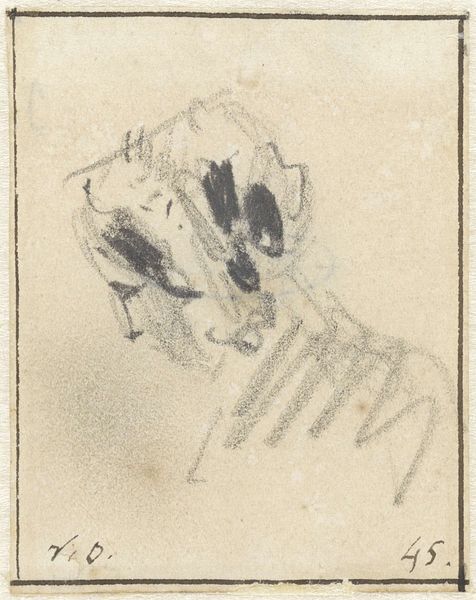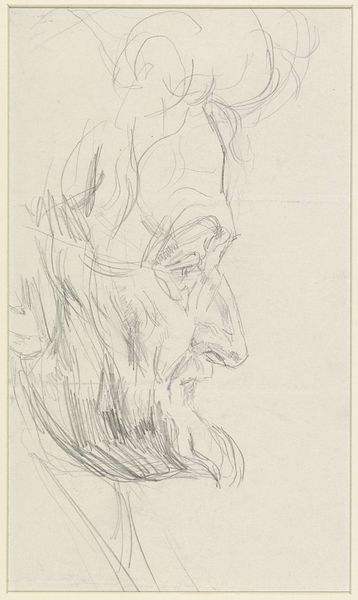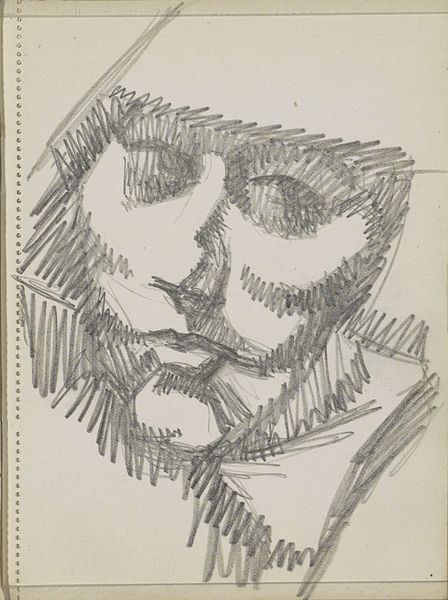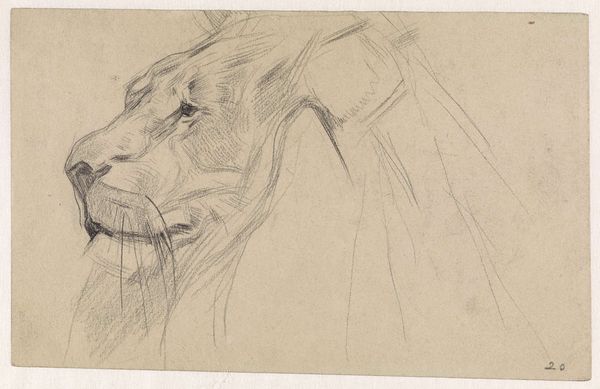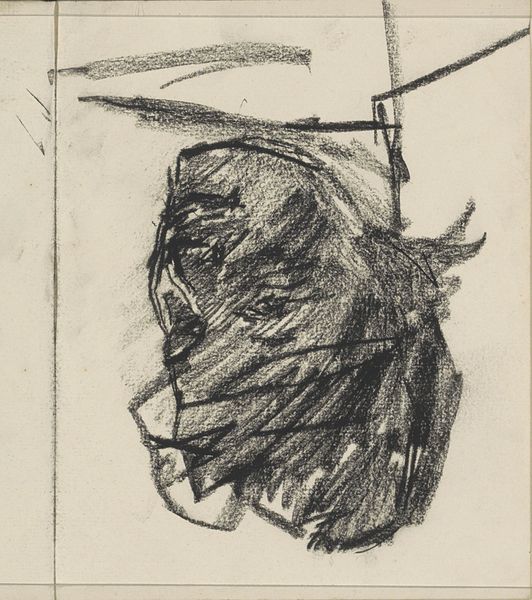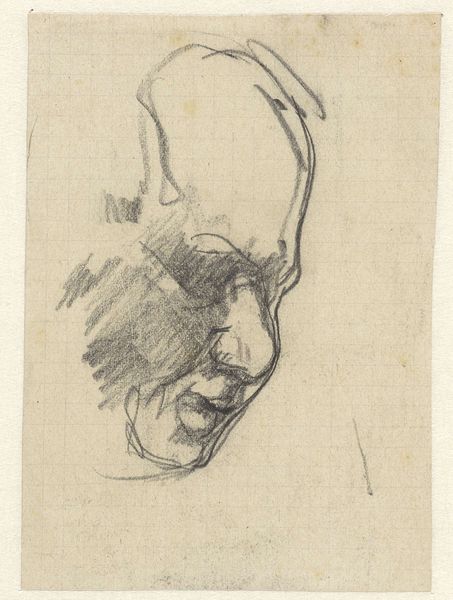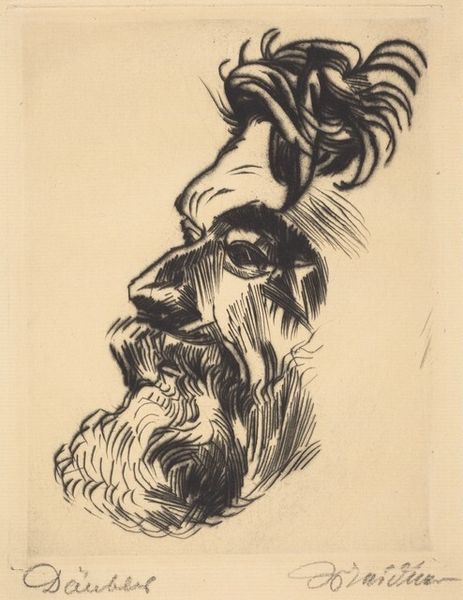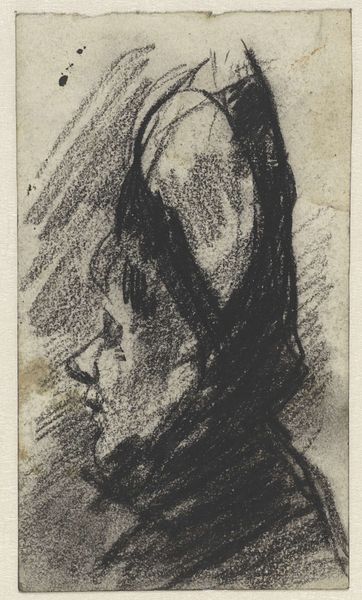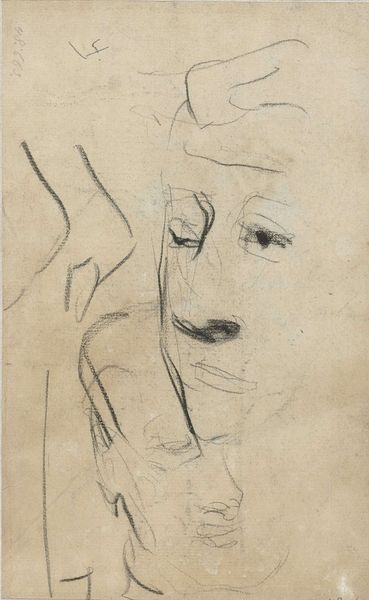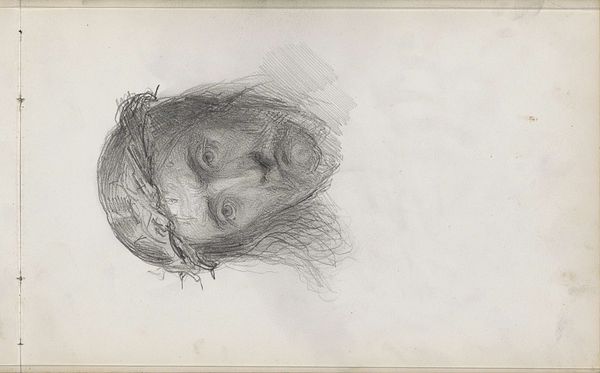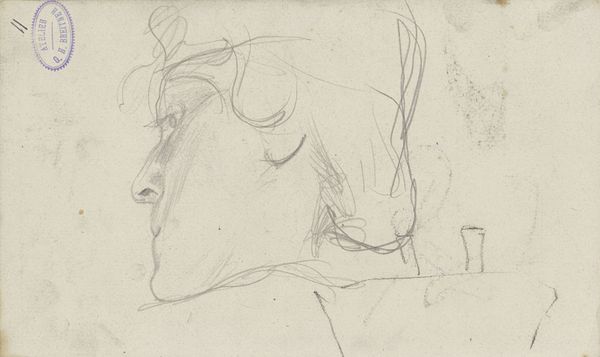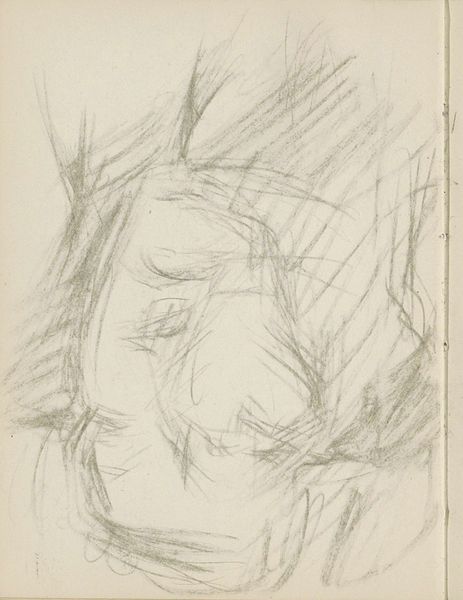
drawing, pencil
#
portrait
#
pencil drawn
#
drawing
#
animal
#
pencil drawing
#
pencil
#
portrait drawing
#
realism
Dimensions: height 170 mm, width 101 mm
Copyright: Rijks Museum: Open Domain
Editor: We're looking at "Head of a Monkey," a pencil drawing by August Allebé from 1883, housed at the Rijksmuseum. It's incredibly detailed, capturing a somewhat melancholic expression. How would you interpret this work purely from a formalist perspective? Curator: From a formalist viewpoint, the expressiveness arises primarily from the manipulation of line and value. Note the density of hatching used to delineate the fur, particularly around the brow, which contributes to the somber affect you perceived. The contrasting areas of smooth paper create negative space that both defines the form and contributes to the composition's dynamism. Editor: So the lines aren’t just descriptive, they are expressive, building the emotion of the piece? Curator: Precisely. Consider how Allebé's application of seemingly chaotic lines coalesce to generate an arresting likeness. Do you notice any inherent patterns that contribute to this end? Editor: Yes, now that you mention it, the diagonal strokes seem to direct the eye, creating a subtle movement, even a tension, towards the center. Also, there's a contrast between the controlled, finer lines around the monkey’s eye and the wilder hatching on its head, which also creates dynamism. Curator: An astute observation. And what does this focused articulation of certain elements relative to others, especially the eyes, suggest to you about the artist's intended effect, judged only by compositional choices? Editor: It creates a focal point; drawing our attention and investing the animal with a heightened sentience, as though Allebé sought to portray this animal’s inner thoughts. It almost anthropomorphizes the monkey through close visual observation. Curator: Precisely. From a formalist point of view, the drawing embodies a keenness and technical mastery that compels one to pause and recognize the emotive qualities conveyed through its line, shape, and form alone. Editor: I’m starting to appreciate the expressive capabilities of what I initially saw as a simple sketch. Thank you! Curator: The pleasure was all mine. Observing closely encourages further observation.
Comments
No comments
Be the first to comment and join the conversation on the ultimate creative platform.
